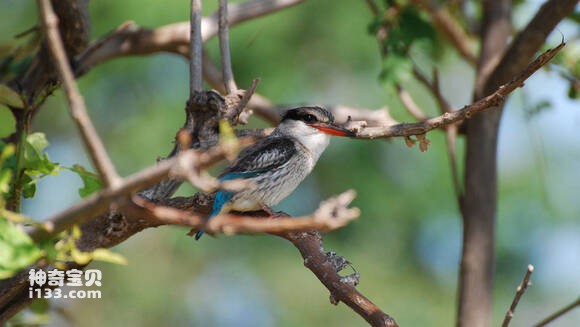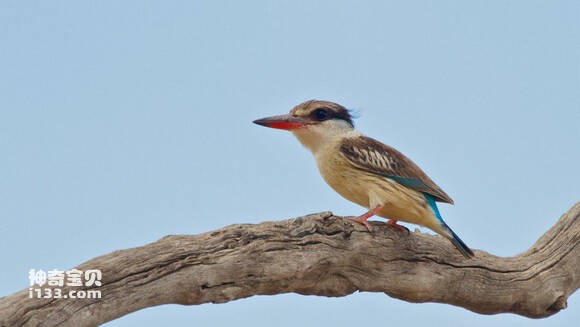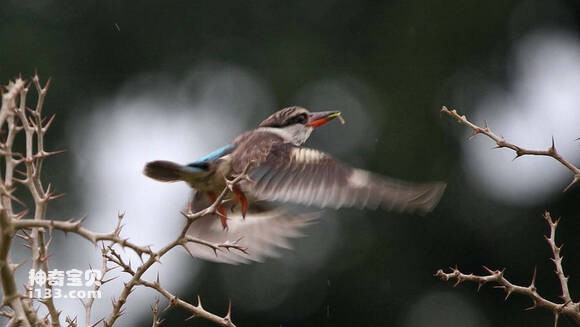Halcyon chelicuti
IUCN
LCBasic Information
Scientific classification
- name:Halcyon chelicuti
- Scientific Name:Halcyon chelicuti,Striped kingfisher
- Outline:Climbing birds
- Family:
Vital signs
- length:About 17 cm
- Weight:30-50g
- lifetime:No textual research information is available
Feature
Distribution and Habitat
The emerald is found in central and southern Africa.
The emerald usually inhabits forests and shrubs, avoids densely cultivated areas, and is not always dependent on aquatic environments. Found from sea level to 2,300 meters.
Appearance
Emerald 17 cm, male bird weight 30-41g, female bird weight 37-50 g. The forehead is streaked with brown stripes and has almost equal proportions of black and white feathers. The bird's eyes, stripes and eyes are black. Cheeks, neck cream, white gray or light yellow, with white thin dark stripes. The cape and the cape are dark brown with a contrasting sky blue back and tail. The green tail is bluish-gray in clip, and the overlying wings are dark brown and slightly white. The entire lower body (chin, throat, chest, bottom tail) is white. The abdomen is white, especially with pale yellow and black stripes around the edges. The bottom tail is silver-grey. The upper jaw is brown or purple, red, and a few brownish-red. Iris dark brown, legs dark red.
The mouth is thick and long like a chisel, the base is wider, the mouth peak is straight, the peak ridge is round, there is no nasal groove on both sides; Wing circle, the first primary feather is equal or slightly shorter than the seven
Details
Halcyon chelicuti, Striped kingfisher, has two subspecies (1.Halcyon chelicuti eremogiton is found in the Sahel region of Mali and in Nigeria and Sudan). 2.Halcyon chelicuti chelicuti is found in Mauritania, Somalia, Namibia, Botswana and South Africa. .

Jadeite usually hunts alone or in pairs. Like most forest kingfishers, they are completely carnivorous. Often searching for prey in leaves or dirt. The main diet is invertebrates such as crickets, spiders, scorpions, and snails. It also eats small vertebrates such as small fish, small snakes and lizards.

Emerald nests on earth cliffs or river embankments, tunnelled caves dug with mouths for nests, 60 cm deep, 20 cm wide, 10 cm high, oval. These caves are generally bare of bedding. The eggs are laid directly on the nest ground. Both sides take turns incubating the eggs. Some also drill holes in tree trunks for nests. Eggs are nearly round, pure white.
Listed on the International Union for Conservation of Nature (IUCN) Red List Protection Level: Not Threatened (LC).
Protect wild animals and eliminate wild meat.
Maintaining ecological balance is everyone's responsibility!








